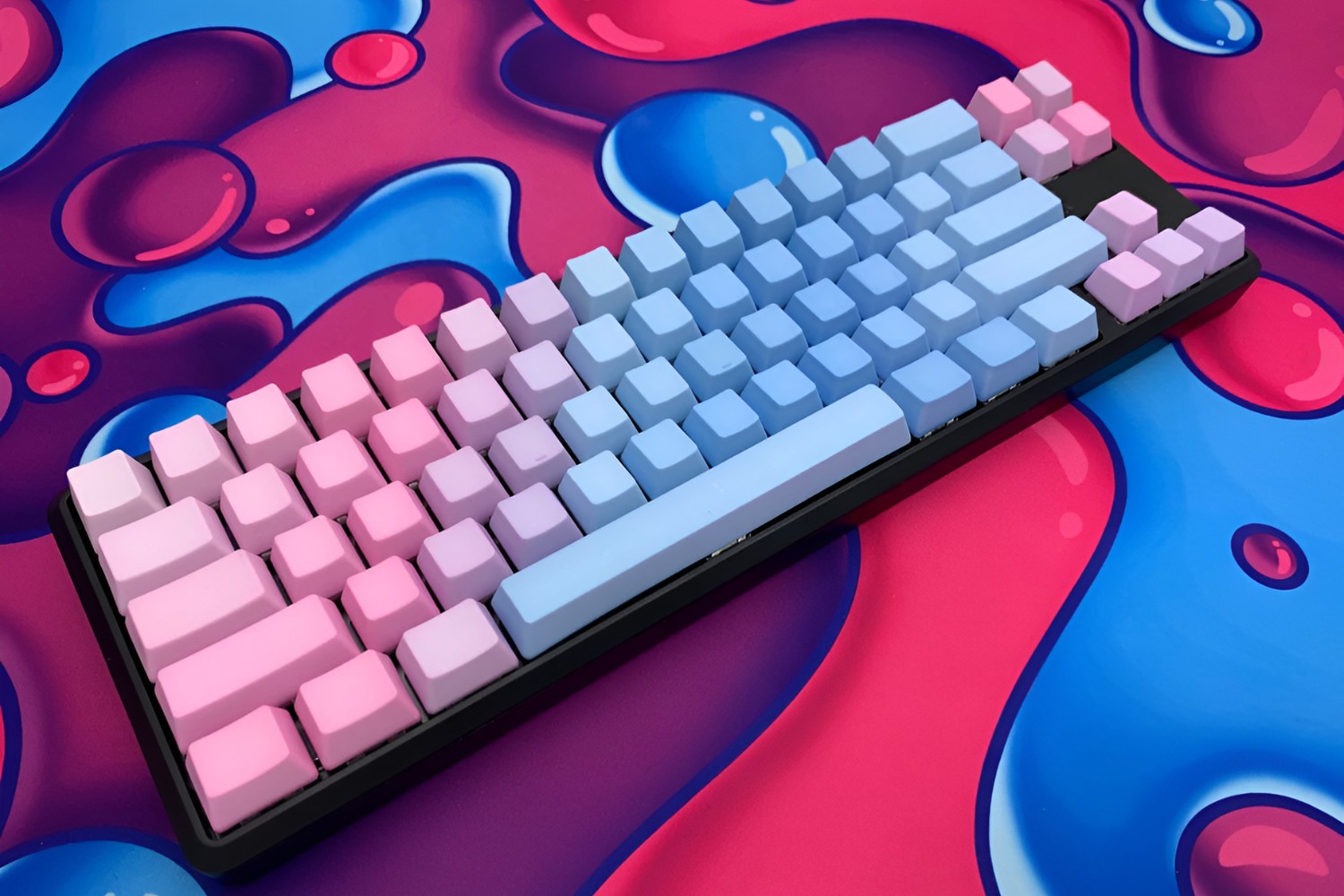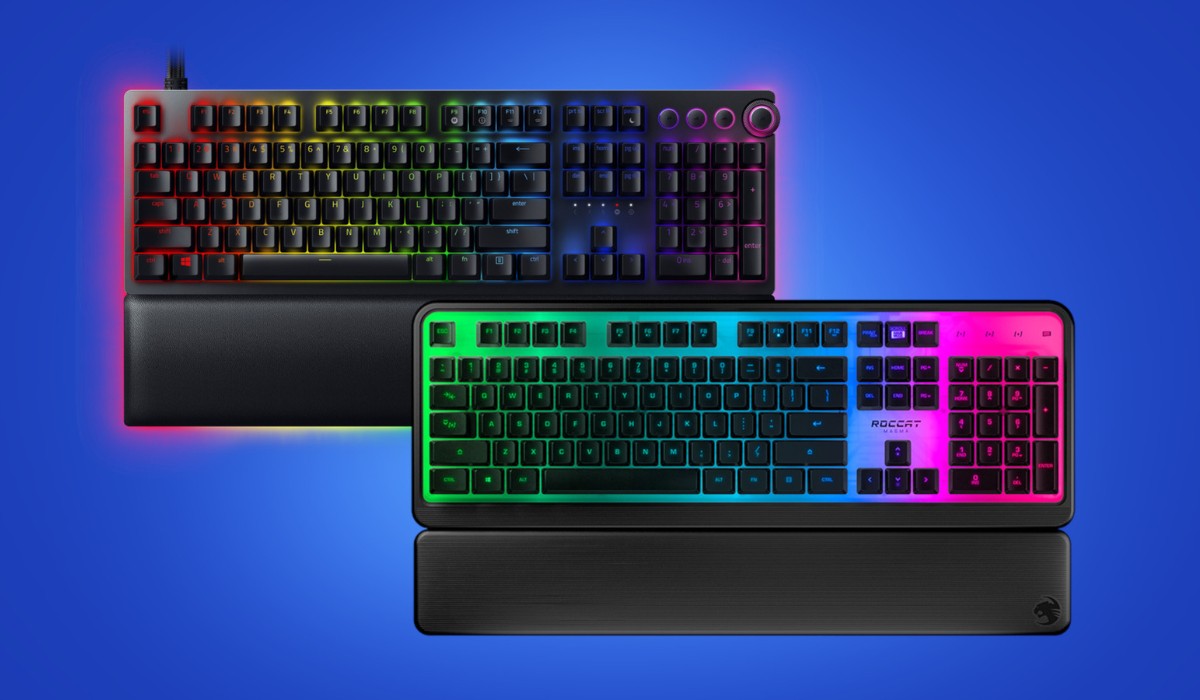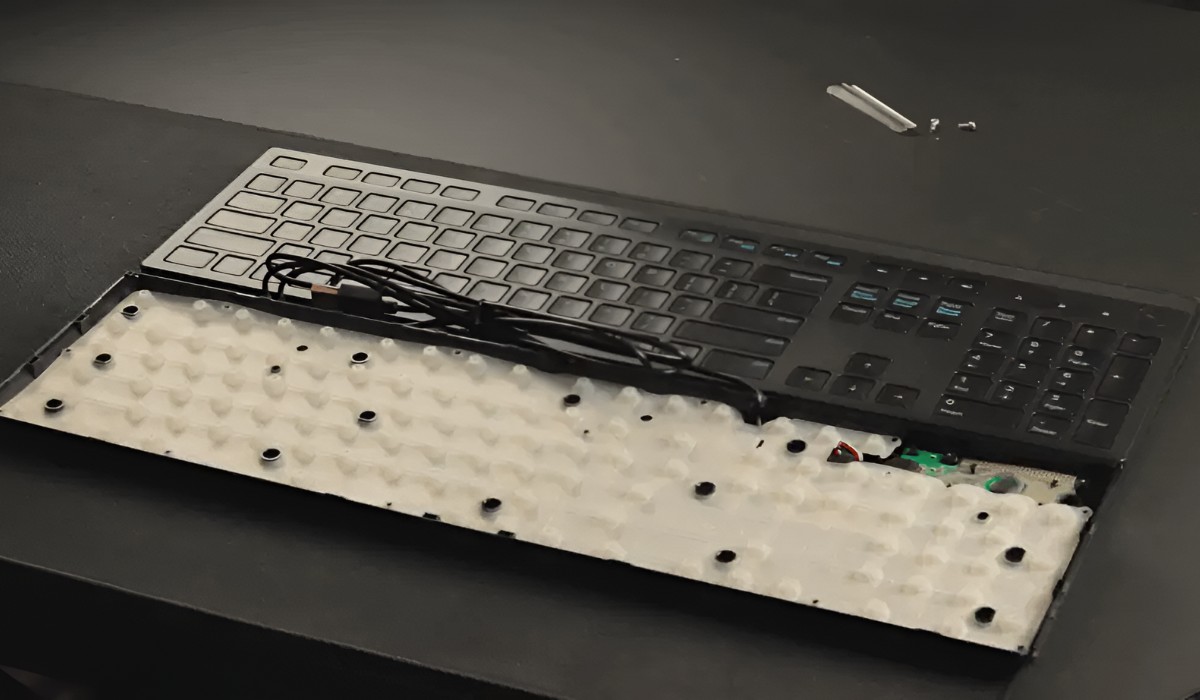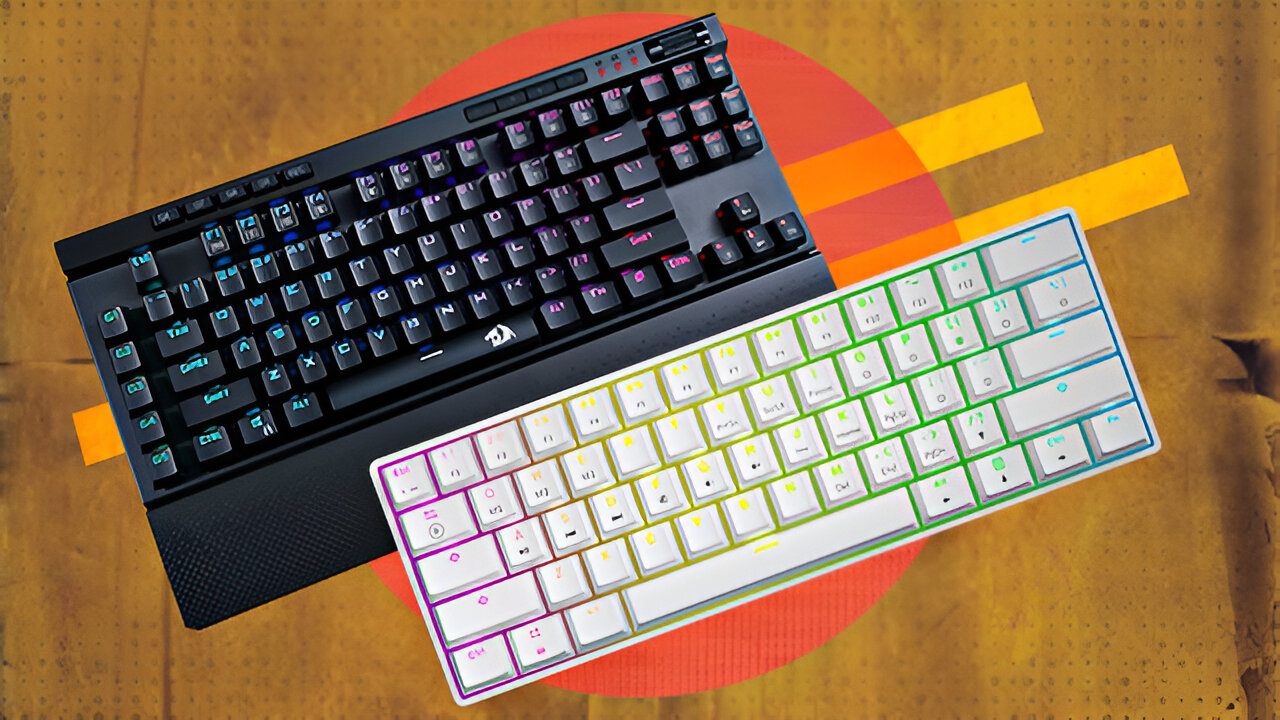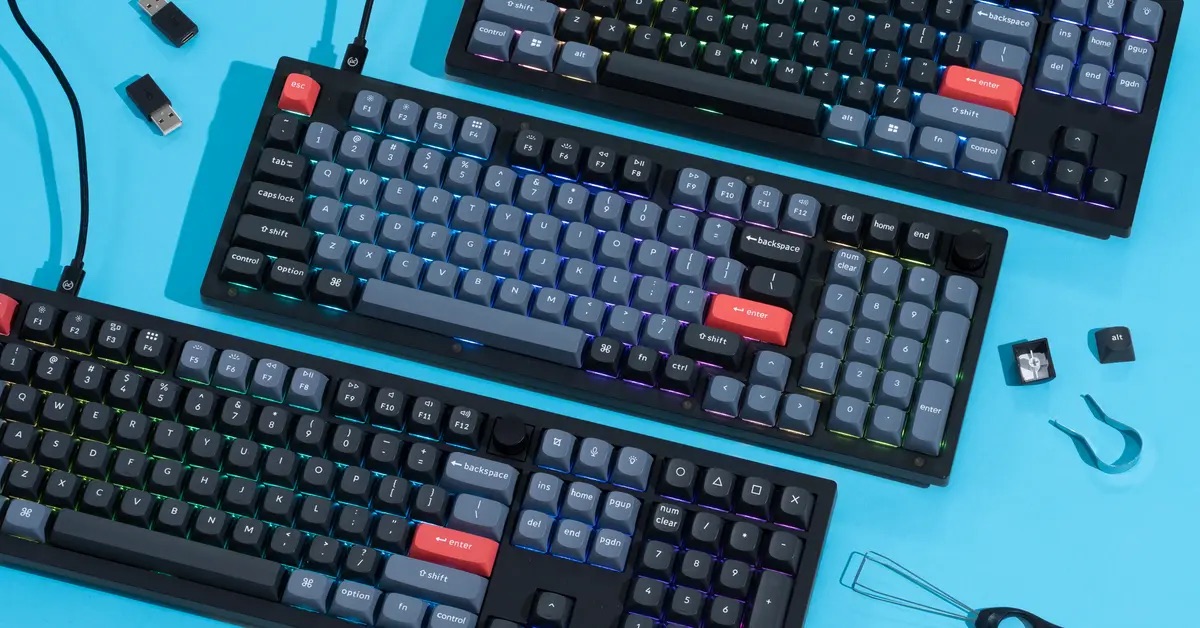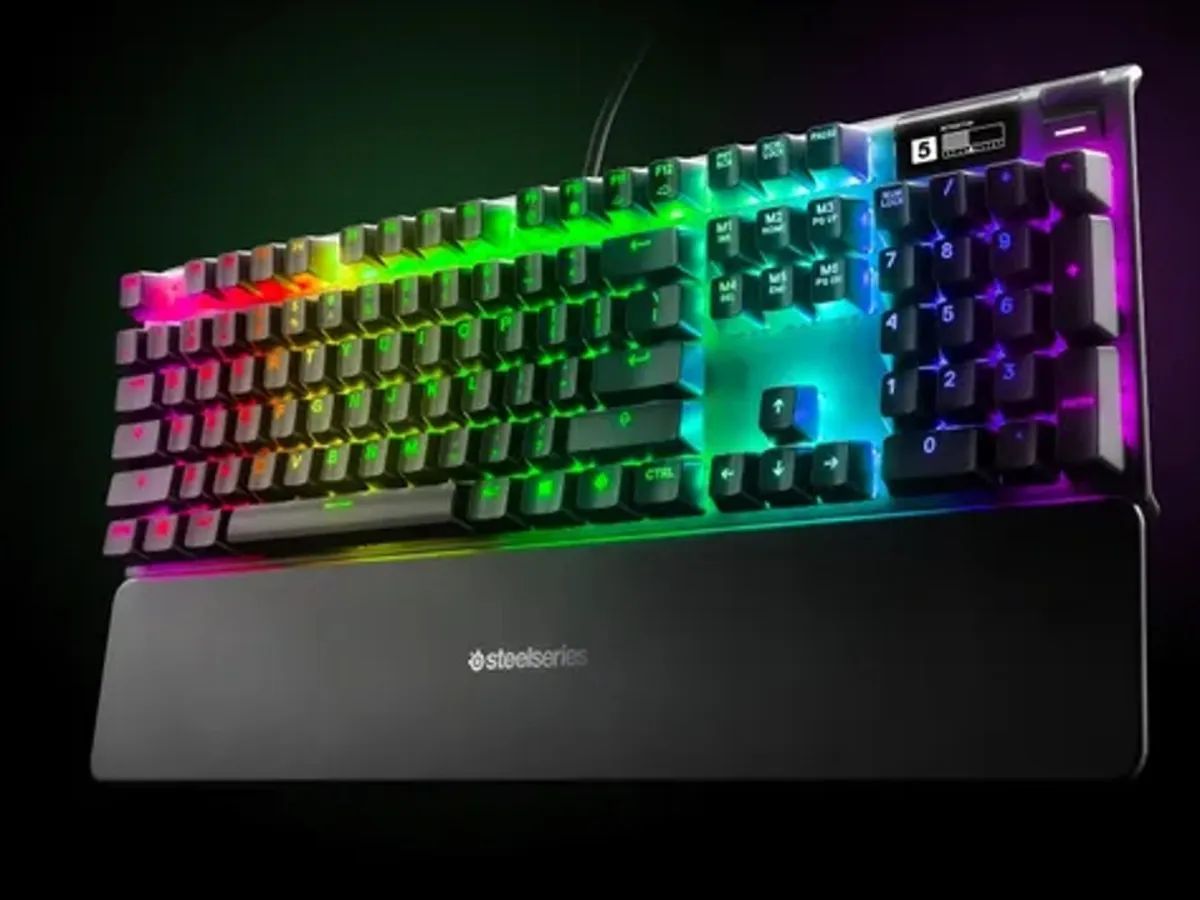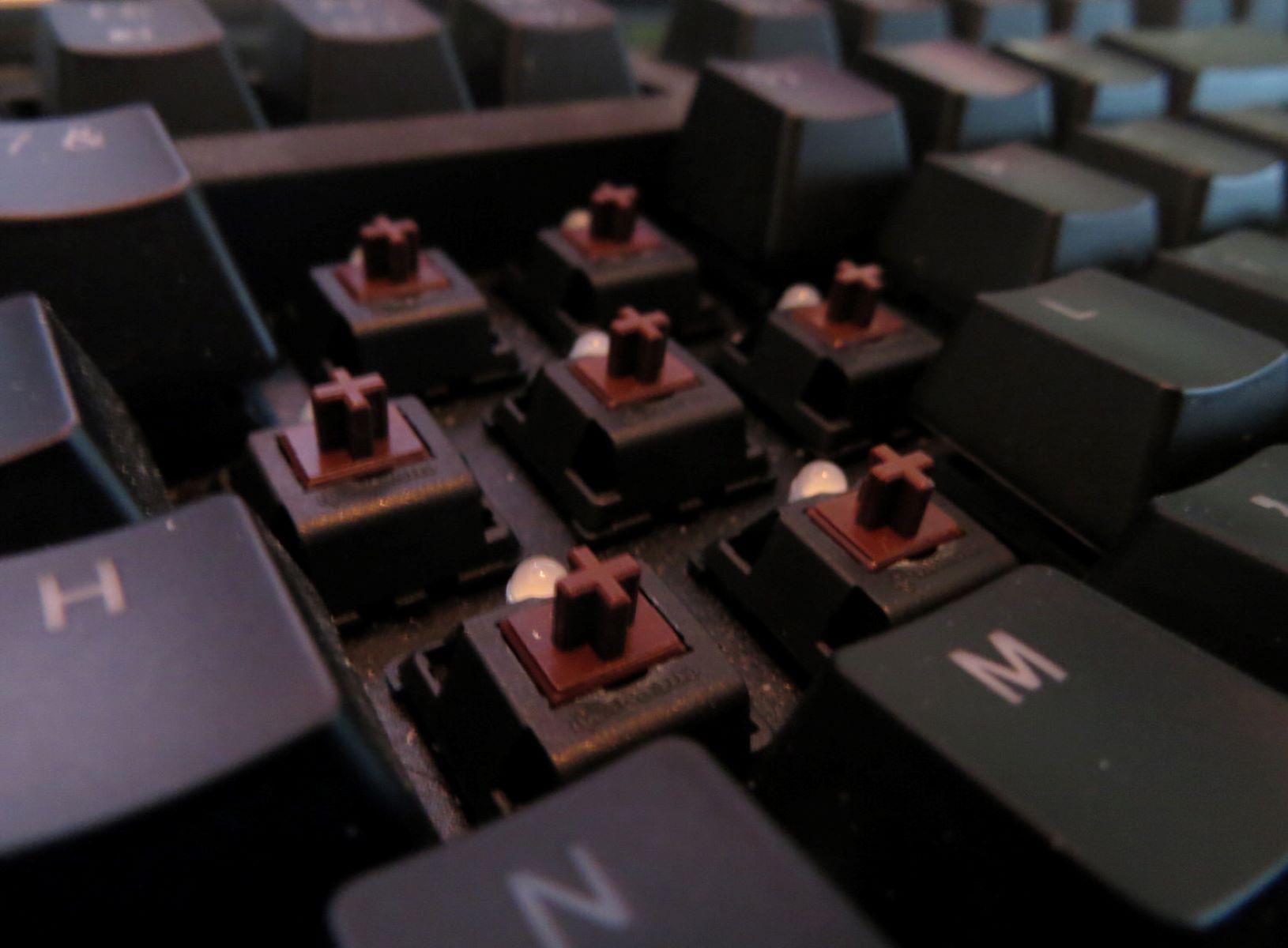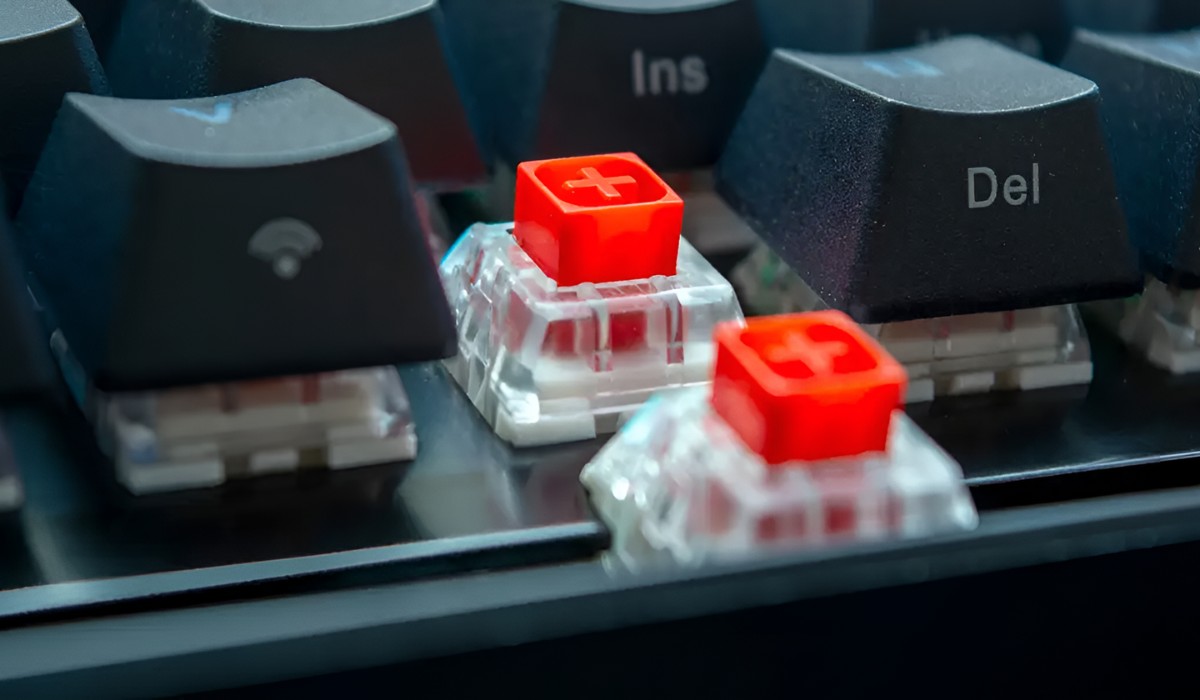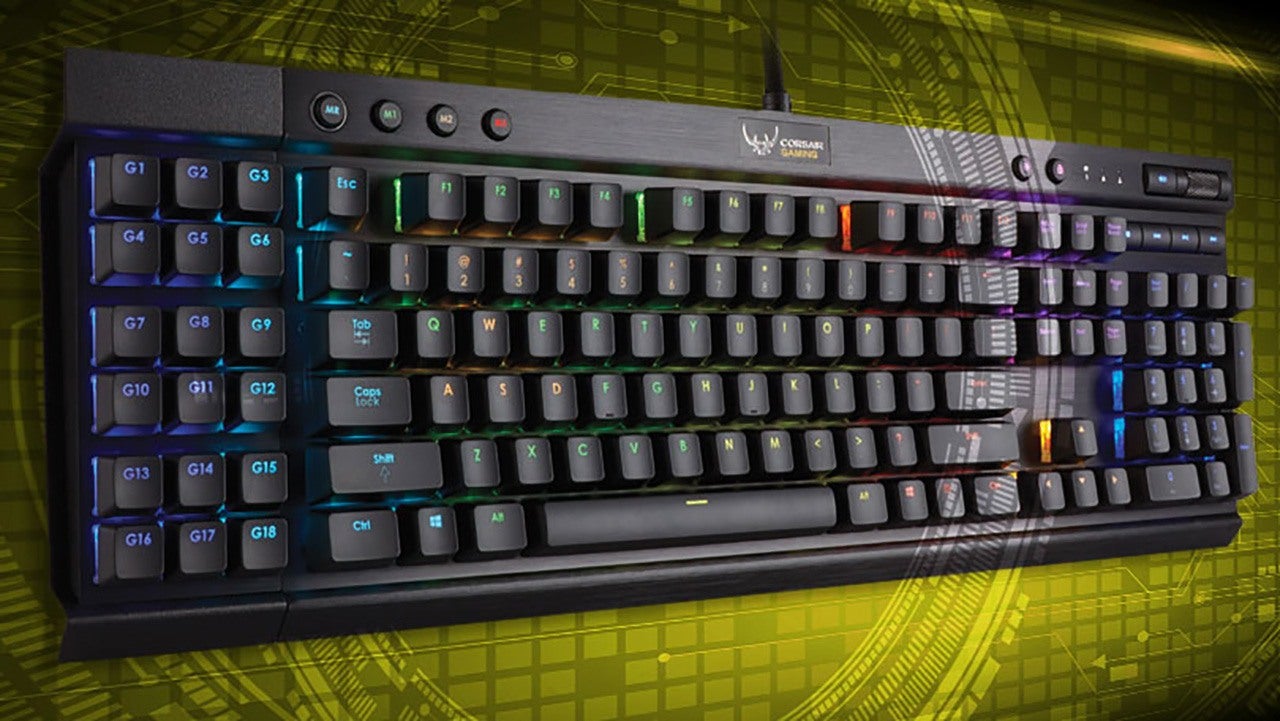Introduction
Welcome to the world of mechanical keyboards, where the act of typing becomes an experience to savor. In the realm of computer peripherals, the choice of a keyboard is often overlooked, yet it can significantly impact productivity, comfort, and overall user experience. While traditional rubber dome keyboards have been the norm for decades, mechanical keyboards have surged in popularity due to their unique design and exceptional performance.
Mechanical keyboards are not merely tools for inputting text; they are tactile, audible, and customizable marvels that cater to the needs and preferences of users across diverse domains. Whether you are a programmer seeking a responsive and durable input device, a writer craving a symphony of clicks with each keystroke, or a gamer yearning for lightning-fast responsiveness, a mechanical keyboard offers a tailored solution.
The allure of mechanical keyboards lies in their intricate construction, satisfying key switches, and the sheer range of options available. From the distinct feel of each key press to the audible feedback that resonates with every stroke, these keyboards elevate the act of typing to an art form. As we delve deeper into the world of mechanical keyboards, we will explore their distinguishing features, advantages, and potential drawbacks, shedding light on why they have become the keyboard of choice for enthusiasts and professionals alike.
Join us on this enlightening journey to uncover the secrets of mechanical keyboards and discover how they can revolutionize your typing experience. Whether you are a seasoned user or new to the world of mechanical keyboards, this exploration promises to unveil the nuances that set these devices apart from conventional keyboards, offering valuable insights into their unparalleled appeal.
What is a Mechanical Keyboard?
A mechanical keyboard is a type of keyboard that utilizes individual mechanical switches for each key. Unlike traditional rubber dome keyboards, where pressing a key compresses a rubber dome beneath the key, mechanical keyboards feature discrete switches that register each keystroke with remarkable precision and consistency. These switches are typically composed of a spring and stem mechanism, providing a tactile sensation and audible feedback that varies based on the specific switch type.
One of the defining characteristics of mechanical keyboards is their modular and customizable nature. The switches used in mechanical keyboards come in various types, each offering distinct actuation forces, tactile feedback, and audible clicks. This diversity allows users to select switches that align with their preferences, whether they prioritize a light and linear feel for gaming or a tactile and clicky response for typing.
Furthermore, mechanical keyboards often boast a robust and durable construction, with many models featuring metal backplates and high-quality keycaps. This sturdiness not only enhances the keyboard’s longevity but also contributes to a more substantial and satisfying typing experience. Additionally, mechanical keyboards are renowned for their anti-ghosting and n-key rollover capabilities, ensuring that every keystroke is accurately registered, making them ideal for fast typists and gamers.
Moreover, the programmability of mechanical keyboards sets them apart from their conventional counterparts. Many mechanical keyboards offer advanced customization options, allowing users to remap keys, create macros, and personalize the backlighting to suit their specific needs. This level of flexibility empowers users to tailor their keyboards to their workflow, gaming style, or ergonomic requirements, fostering a highly personalized and efficient typing experience.
Ultimately, a mechanical keyboard represents a departure from the mundane world of standard keyboards, offering a tactile and customizable interface that transforms typing into a sensory delight. By delving into the intricacies of mechanical switches and the myriad design options available, we gain a deeper appreciation for the craftsmanship and versatility that define these exceptional input devices.
How is a Mechanical Keyboard Different from a Regular Keyboard?
At first glance, a mechanical keyboard may appear similar to a regular rubber dome keyboard, but a closer inspection reveals a world of difference. The fundamental distinction lies in the underlying key switch mechanism. While regular keyboards rely on rubber dome switches that actuate upon the compression of a rubber dome, mechanical keyboards utilize individual mechanical switches for each key, revolutionizing the typing experience in several key ways.
One of the most noticeable differences is the tactile feedback and audible click offered by mechanical keyboards. With distinct switches for each key, users experience a satisfying tactile bump or audible click with every keystroke, providing immediate and tangible feedback. In contrast, traditional rubber dome keyboards often lack this tactile response, resulting in a less engaging and responsive typing experience.
Additionally, the durability and longevity of mechanical keyboards set them apart from regular keyboards. The construction of mechanical switches, typically featuring metal contacts and spring mechanisms, ensures a longer lifespan and consistent performance over time. In contrast, the rubber dome switches in regular keyboards are more prone to wear and degradation, leading to a decline in typing comfort and accuracy.
The customizable nature of mechanical keyboards further distinguishes them from regular keyboards. Many mechanical keyboards offer hot-swappable switches, allowing users to replace individual switches without desoldering, enabling effortless customization and maintenance. Moreover, the ability to select from a wide range of switch types, each with unique actuation forces and tactile feedback, empowers users to tailor their typing experience to their preferences, a level of customization rarely found in regular keyboards.
Another significant difference lies in the anti-ghosting and n-key rollover capabilities of mechanical keyboards. These features ensure that every keystroke is accurately registered, even during rapid and simultaneous typing or gaming sessions. Regular keyboards, on the other hand, may exhibit limitations in this regard, leading to missed or delayed inputs during intense usage.
By understanding these disparities, we gain insight into the transformative impact of mechanical keyboards on the typing experience. The tactile feedback, durability, customization options, and advanced input capabilities collectively elevate mechanical keyboards to a realm far beyond the traditional confines of regular keyboards, offering a compelling alternative for users seeking a superior typing interface.
Advantages of Using a Mechanical Keyboard
The adoption of a mechanical keyboard heralds a multitude of advantages that cater to the diverse needs and preferences of users across various domains. From enhanced typing comfort to improved gaming performance, the advantages of using a mechanical keyboard are as diverse as they are compelling.
- Tactile Feedback and Comfort: Mechanical keyboards offer tactile feedback and distinct key presses, providing a satisfying typing experience. The tactile bump and audible click of certain switch types contribute to improved typing comfort and accuracy, allowing users to type for extended periods with reduced fatigue.
- Durability and Longevity: The robust construction of mechanical keyboards, featuring individual switches with metal components, results in a longer lifespan and consistent performance. This durability ensures that the keyboard retains its tactile feel and responsiveness even after years of heavy use.
- Customization Options: Mechanical keyboards provide extensive customization options, allowing users to select from a wide array of switch types, keycap materials, and backlighting configurations. Additionally, hot-swappable switches enable effortless customization and maintenance, empowering users to tailor their keyboards to their specific preferences and needs.
- Enhanced Typing Speed and Accuracy: The anti-ghosting and n-key rollover capabilities of mechanical keyboards ensure that every keystroke is accurately registered, even during rapid and simultaneous typing or gaming sessions. This feature enhances typing speed and accuracy, making mechanical keyboards ideal for fast typists and gamers.
- Improved Gaming Performance: The responsiveness and precision of mechanical keyboards make them well-suited for gaming. The tactile feedback and rapid actuation of certain switch types contribute to enhanced gaming performance, providing gamers with a competitive edge.
- Aesthetic Appeal: Many mechanical keyboards feature high-quality keycaps and customizable backlighting, adding a touch of aesthetic appeal to the user’s workspace. The visual customization options allow users to personalize their keyboards, creating a visually striking and personalized typing interface.
These advantages collectively position mechanical keyboards as a versatile and superior alternative to traditional rubber dome keyboards, offering an array of benefits that cater to the unique preferences and requirements of users. Whether it’s the tactile satisfaction of each keystroke, the durability and customization options, or the enhanced performance in typing and gaming, the advantages of using a mechanical keyboard underscore the transformative impact of this exceptional input device.
Disadvantages of Using a Mechanical Keyboard
While mechanical keyboards offer an array of advantages, they are not without their drawbacks. Understanding the potential disadvantages of using a mechanical keyboard is essential for making an informed decision and selecting a keyboard that aligns with one’s specific needs and preferences.
- Higher Cost: Mechanical keyboards are often more expensive than traditional rubber dome keyboards. The premium materials, intricate switch mechanisms, and customizable features contribute to a higher price point, which may deter budget-conscious consumers.
- Audible Keystrokes: The audible click or tactile feedback of certain mechanical switch types may be disruptive in quiet environments, such as offices or shared workspaces. Users who prioritize a silent typing experience may find the audible keystrokes of mechanical keyboards to be a potential drawback.
- Learning Curve: Switching from a traditional rubber dome keyboard to a mechanical keyboard may entail a learning curve for some users. The distinct tactile feedback and actuation forces of mechanical switches may require an adjustment period, especially for individuals accustomed to the feel of traditional keyboards.
- Weight and Size: Some mechanical keyboards, particularly those with robust construction and metal backplates, may be heavier and bulkier than their traditional counterparts. This added weight and size can impact portability and may not be ideal for users seeking a compact and lightweight keyboard.
- Maintenance and Cleaning: The intricate design of mechanical switches and the presence of individual keycaps can make cleaning and maintenance more labor-intensive compared to traditional rubber dome keyboards. Dust and debris may accumulate within the switches and require meticulous cleaning to maintain optimal performance.
- Switch Variability: The extensive variety of switch types available for mechanical keyboards can be overwhelming for some users. Selecting the ideal switch type that aligns with one’s preferences and usage requirements may require experimentation and research, adding a layer of complexity to the keyboard selection process.
By acknowledging these potential disadvantages, users can approach the selection of a keyboard with a comprehensive understanding of the trade-offs involved. While the higher cost, audible keystrokes, and learning curve may present challenges for some users, the durability, customization options, and enhanced typing experience offered by mechanical keyboards continue to make them a compelling choice for individuals seeking a superior and tailored typing interface.
Conclusion
As we conclude our exploration of mechanical keyboards, we emerge with a profound appreciation for the transformative impact of these exceptional input devices. The distinct tactile feedback, durability, customization options, and advanced input capabilities collectively position mechanical keyboards as a versatile and superior alternative to traditional rubber dome keyboards.
From the satisfying keystrokes and extended lifespan to the enhanced gaming performance and aesthetic appeal, the advantages of using a mechanical keyboard resonate with a diverse range of users, catering to their unique preferences and requirements. However, it is crucial to acknowledge the potential drawbacks, such as the higher cost and audible keystrokes, as well as the learning curve associated with transitioning to a mechanical keyboard.
Ultimately, the decision to embrace a mechanical keyboard hinges on a nuanced evaluation of its benefits and drawbacks, aligning with the user’s specific needs and priorities. Whether it’s the pursuit of a tactile and customizable typing experience, the quest for enhanced gaming performance, or the desire for a durable and visually striking keyboard, the allure of mechanical keyboards persists, captivating enthusiasts and professionals alike.
As technology continues to evolve, the realm of mechanical keyboards stands as a testament to the enduring pursuit of innovation and user-centric design. With each keystroke, these remarkable input devices elevate the act of typing to an art form, offering a symphony of clicks and a canvas for personalized expression. The journey into the world of mechanical keyboards is one of discovery, empowerment, and the seamless fusion of form and function, inviting users to embark on a tactile odyssey that transcends the boundaries of conventional input devices.
In the ever-evolving landscape of technology and human-computer interaction, the legacy of mechanical keyboards endures, beckoning users to embrace a realm where every keystroke is a testament to precision, comfort, and individuality.







